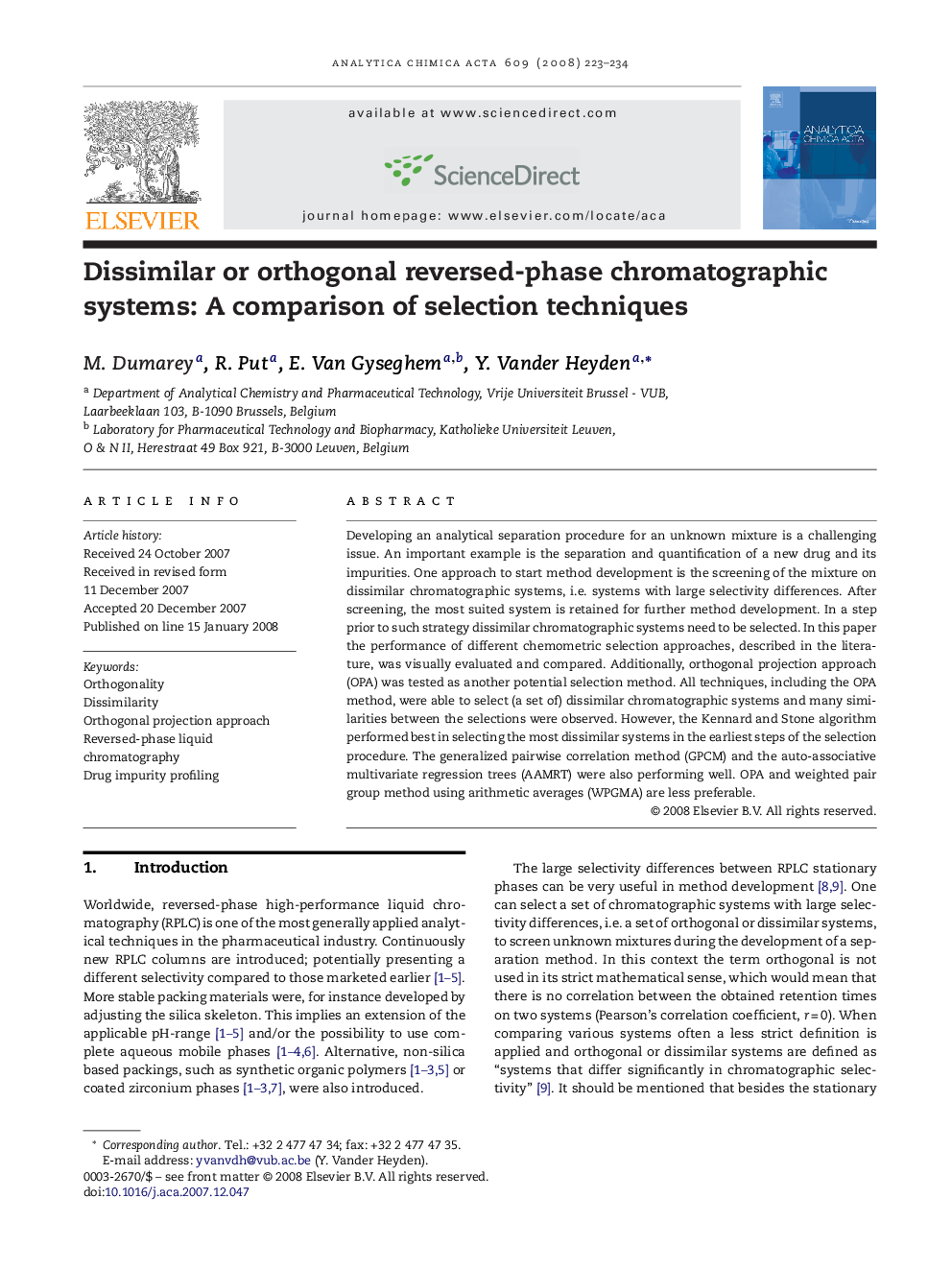| Article ID | Journal | Published Year | Pages | File Type |
|---|---|---|---|---|
| 1169378 | Analytica Chimica Acta | 2008 | 12 Pages |
Abstract
Developing an analytical separation procedure for an unknown mixture is a challenging issue. An important example is the separation and quantification of a new drug and its impurities. One approach to start method development is the screening of the mixture on dissimilar chromatographic systems, i.e. systems with large selectivity differences. After screening, the most suited system is retained for further method development. In a step prior to such strategy dissimilar chromatographic systems need to be selected. In this paper the performance of different chemometric selection approaches, described in the literature, was visually evaluated and compared. Additionally, orthogonal projection approach (OPA) was tested as another potential selection method. All techniques, including the OPA method, were able to select (a set of) dissimilar chromatographic systems and many similarities between the selections were observed. However, the Kennard and Stone algorithm performed best in selecting the most dissimilar systems in the earliest steps of the selection procedure. The generalized pairwise correlation method (GPCM) and the auto-associative multivariate regression trees (AAMRT) were also performing well. OPA and weighted pair group method using arithmetic averages (WPGMA) are less preferable.
Keywords
Related Topics
Physical Sciences and Engineering
Chemistry
Analytical Chemistry
Authors
M. Dumarey, R. Put, E. Van Gyseghem, Y. Vander Heyden,
